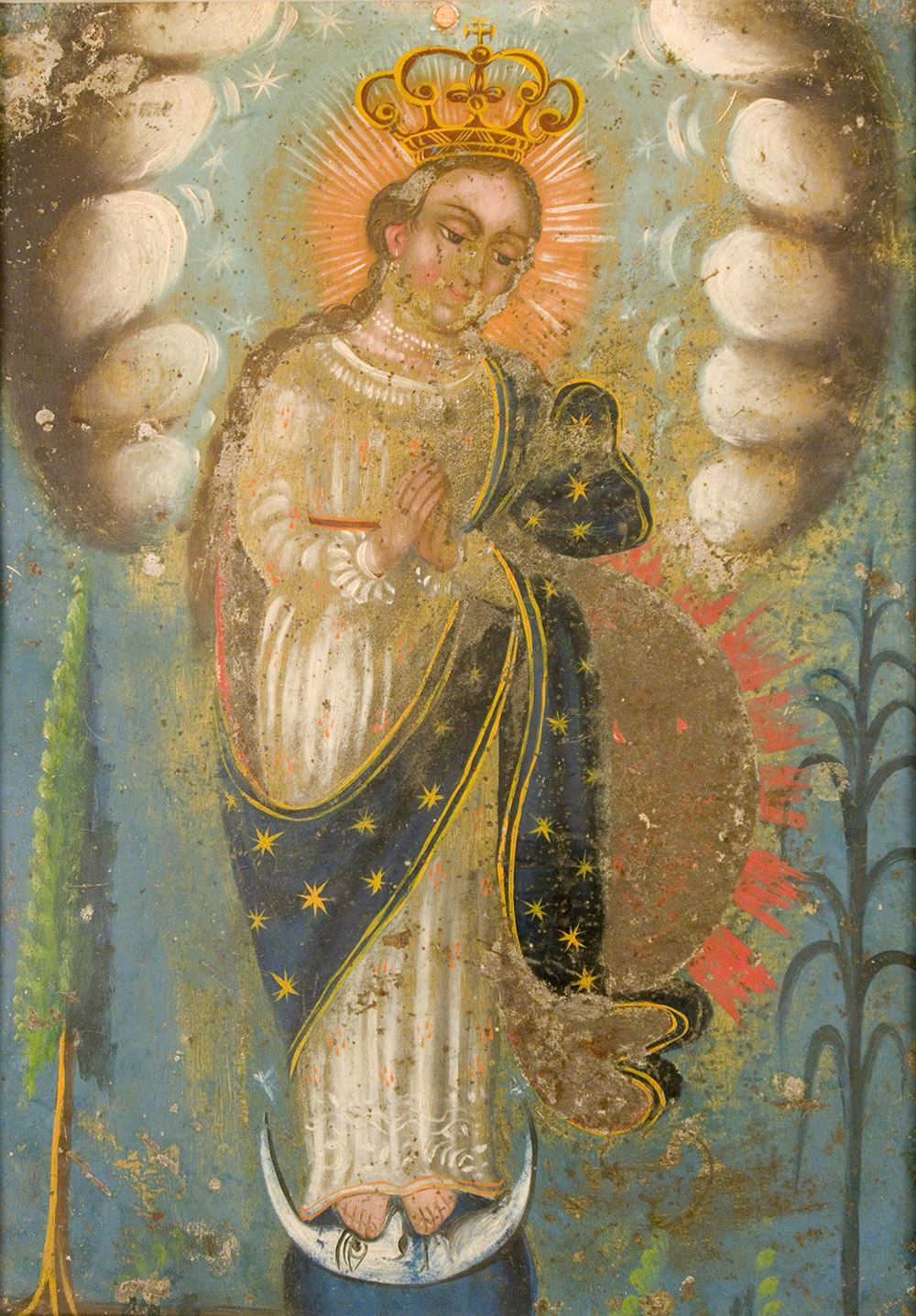Betty Byerley Retablo Collection
La Inmaculada/The Immaculate Conception
The Immaculate Conception refers to the purity of Mary, her birth without original sin. According to the Bible, the archangel Gabriel appeared to an elderly couple, Anne and Joachim, and announced to Anne that she would conceive a child, Mary. The Franciscans long defended the dogma of Mary’s Immaculate Conception. In 1854, after centuries of debate, Pius IX pronounced and defined that the Virgin Mary “in the first instance of her conception, when the soul is created and infused into the body, by a singular privilege and grace granted by God, in view of the merits of Jesus Christ, the Savior of the human race, Mary became the new Eve who was to be the mother of the new Adam, she should have been subject to sin, but, being the new Eve who was to be the mother of the new Adam, she was, by the eternal counsel of God and by the merits of Christ, withdrawn from the general law of original sin, was preserved exempt from all stain of original sin, original sin was excluded from her soul, she was in a state of sanctity, innocence and justice, but not from sorrow, infirmities or death.”
Since the mid-fifteenth-century the Virgin was frequently shown as Saint John’s version of the Apocalyptic Woman, “…a woman clothed by the sun and the moon under her feet and upon her head a crown of twelve stars.” In this retablo, Mary is standing on an upward curving crescent moon, indicative of her purity. The crescent moon is resting on the Earth and behind the Virgin is the Sun. To the Virgin’s right- hand side is a cypress and to the left is usually found a palm frond, however the palm has been replaced with a cornstalk. The cypress is symbolic of death and the palm or in this case the cornstalk signifying triumph over sin and death.

